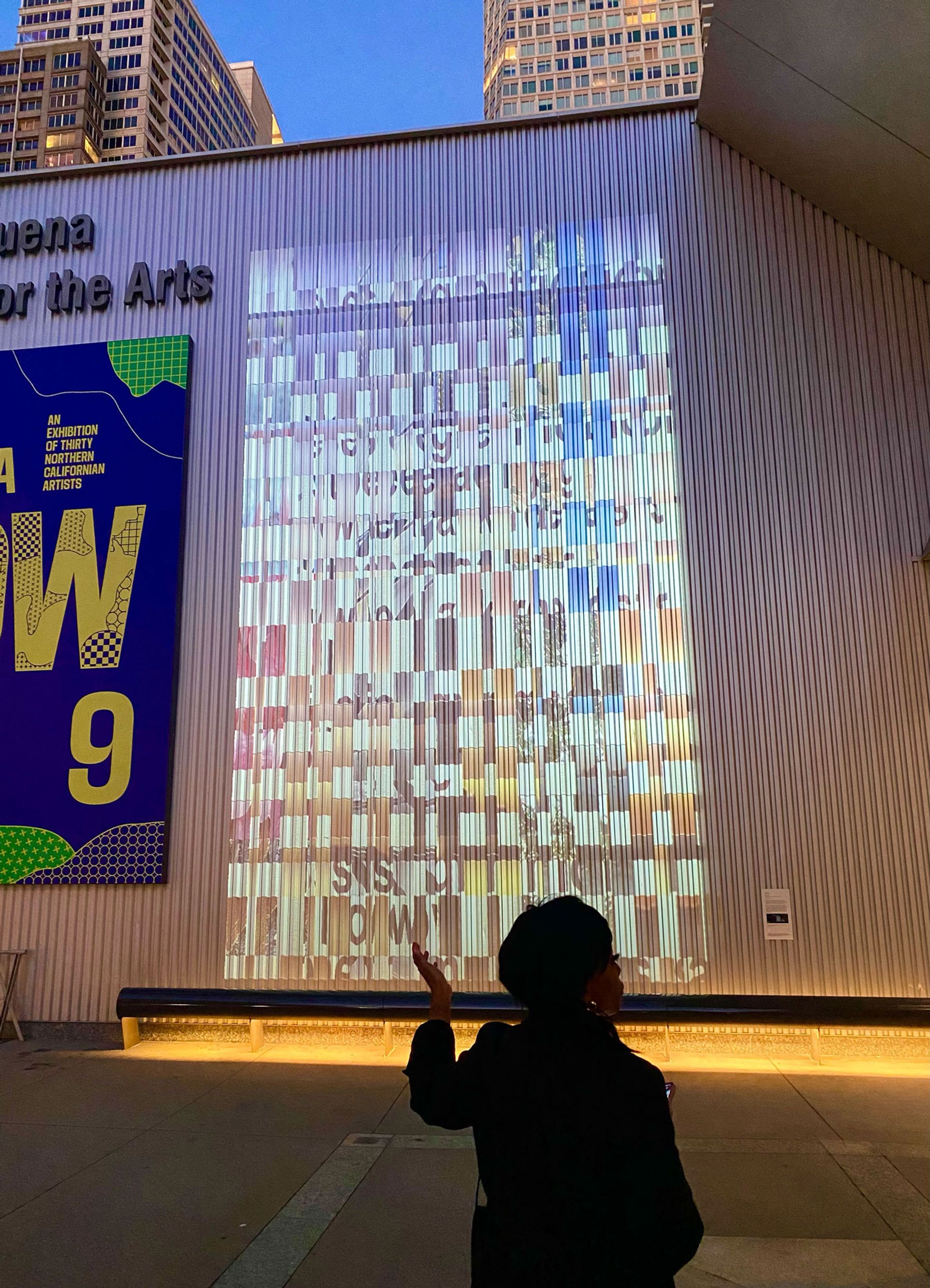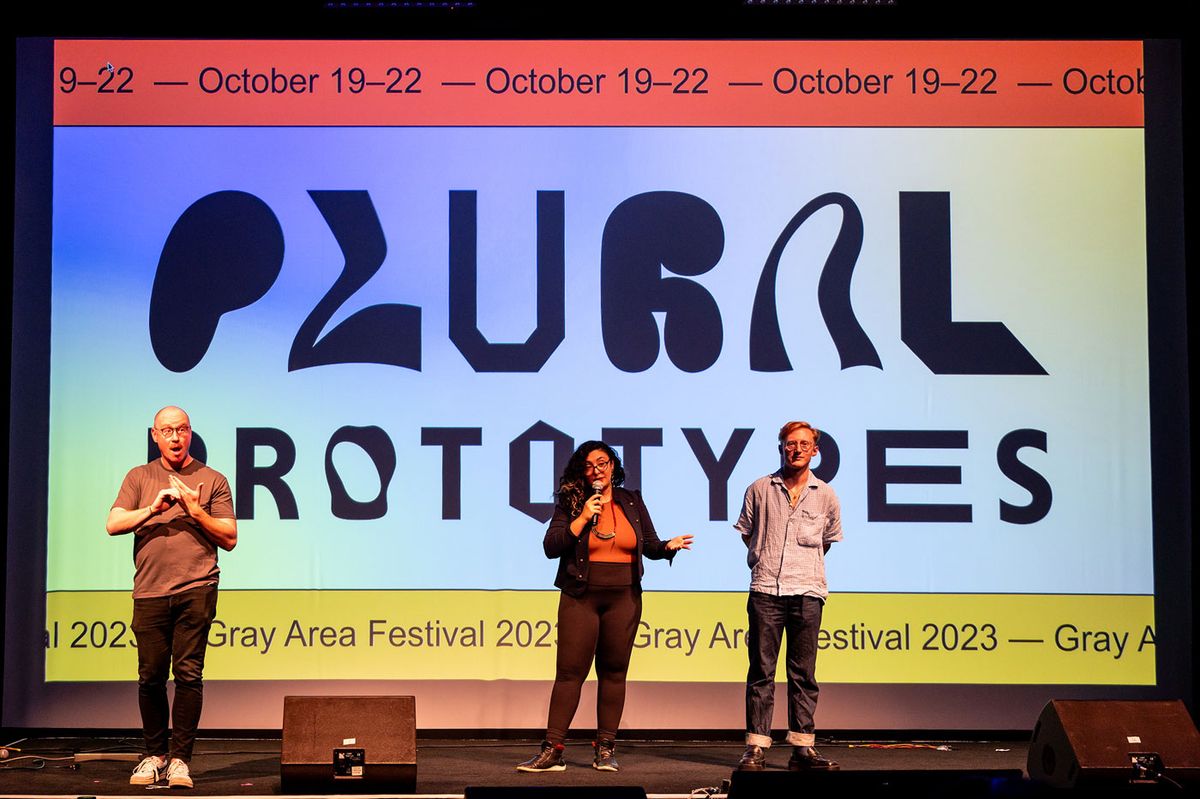In the ever-expanding universe of digital creativity, artists today are charting new territory for what digital art can be and who it can reach. The Gray Area Festival, a conference and exhibition focused on culture and technology held in San Francisco’s Mission District, celebrated its ninth iteration in October. It was organised around the theme “Plural Prototypes"—a topic close to the considerations of equity and inclusivity that drive the event's organisers.
Founded in 2008, Gray Area is a non-profit cultural hub that uses culture and technology for social good. The group’s theme for 2023, informing all of its programming for the year, is “access", inviting artists, curators, and designers to explore the opportunities and roadblocks that arise when using new technologies to create art that is meaningfully inclusive and equitable, both in its creation and dissemination. At the festival, which included panel discussions, artist presentations, and workshops, a key line of questioning was how to create a new model of access in the world of digital art, one that is based in creativity and innovation rather than compliance and minimum requirements.
“We are thinking about access as something we build in from the very beginning of the process as a model of inclusion,” said Lindsey Felt. Felt is the disability, access, and impact lead at Leonardo/ISAST, an art and technology fellowship for disability innovation, where she helps direct incubator sessions on new digital art projects. For Felt and others speaking during the festival, the emphasis was on building access into the creative process, rather than thinking of it as an add-on after the fact. “We’re moving away from a model of compliance and instead thinking about how to implement it from the beginning,” said Felt.
Indeed, the projects and programs at Gray Area Festival, many of which were commissioned by the VR arts initiatives VIVE Arts and Viverse, demonstrated in real time the opportunities for digital artworks that front-load inclusivity as part of the creative brief.
A notable example was a collection of digital works called TEXERE by the Bay Area artist Indira Allegra. As the artist describes it, “TEXERE is a collaborative platform which transforms human losses into ever-evolving digital memorial tapestries.” Expressed through multiple platforms, the work was displayed at Gray Area Festival as a virtual reality (VR) experience called TEXERE: A Tapestry of Forest. Through a VR headset, users co-navigated through a virtual memorial space in a forest where they could reflect on shared experiences of loss. This virtual space was deeply moving and unexpectedly healing. “Movement work—whether physical or virtual—allows us to metabolise experiences of grief and loss and transform it into something new,” Allegra said during their talk at the festival.
Another TEXERE piece by Allegra is on view at the Yerba Buena Center for the Arts (YBCA) as part of the Bay Area Now 9 exhibition (until 5 May). Here, Allegra’s work takes the form of an interactive digital memorial tapestry projected on to the exterior of the YBCA’s building and visible after sunset. Viewers can upload their own offerings—either text or image—to the tapestry in response to Allegra’s prompt: “Mark the loss of a sense of home.” In-person Ritual Repair Workshops invite the community to join Allegra at the museum for a collective process of memorialisation and transformation. Additionally, a new site-specific version of TEXERE will be on view this month during FOG Design+Art, San Francisco’s annual art fair. In this work, which is constantly refreshing as new memorials are digitally woven into the tapestry, individual loss becomes something generative and communal.

The artist Indira Allegra with their interactive digital memorial tapestry TEXERE at Bay Area Now 9 at the Yerba Buena Center for the Arts. The piece will feature this month at FOG Design+Art, San Francisco’s annual art fair
Along with Allegra’s work, Bay Area Now 9 highlights contemporary artists working across the Bay Area in digital as well as 2D and 3D mediums, plus a series of film screenings, workshops, performances, and activations. Allegra’s work exemplifies a central theme of the show, which centres on care and convening and was evident not only in the works on display, but also the curatorial initiatives behind the show. “This notion of convening as a discipline kept coming up,” notes Amy Kisch, head of art and public programs at the YBCA. “So we were asking ourselves, how do we bring in communities that maybe don’t always feel the sense of invitation into contemporary art spaces?”
Ultimately, in both the metaverse and the physical realm, digital artists are paving the way for what it looks like to create new worlds where inclusivity is the foundation, rather than something feathered in after the fact. The works on view at Gray Area Festival and Bay Area Now 9 not only invite users to find community and healing, but provide many access points for doing so.
This raises the question of whether artists can and should be encouraged to take a leading role in designing infrastructures, both physical and digital, that support new, radically inclusive and equitable, worlds.
- Lauren Gallow is a Seattle-based writer and editor specialising in architecture, design, and visual art. She is a regular contributor to Dwell, Luxe, and Metropolis and her writing has also appeared in Cultured, Cereal, Architectural Digest, Architect’s Newspaper and Interior Design.


